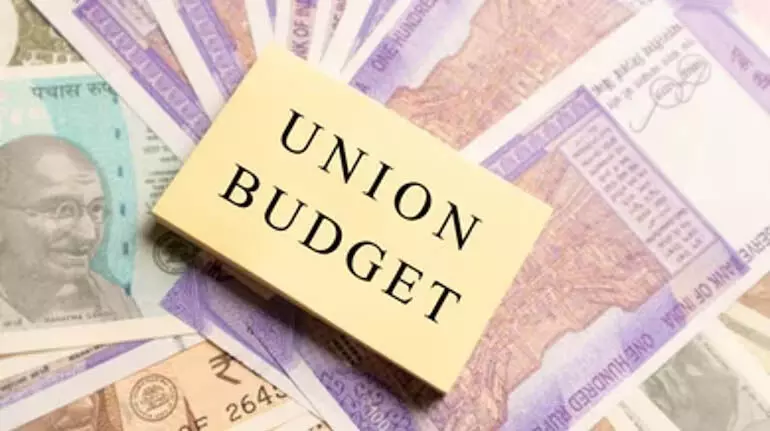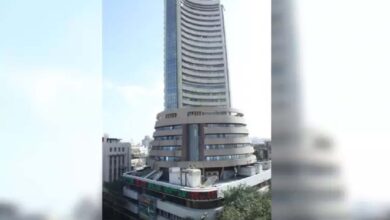Union Budget: In the light of the reforms implemented in the last decade

Union Budget: Finance Minister Nirmala Sitharaman is set to create history on Tuesday by presenting her seventh consecutive budget for the financial year 2024-25. In this way she will break the record of former Prime Minister Morarji Desai. Amid preparations for the Union Budget, economist and author Dr Rajiv Kumar, formerly Chairman of the India Foundation and former Vice Chairman of Niti Aayog, shares his views on taxation, reviving the rural economy and GST exemptions in an interview with Sabyasachi Dash. Edited excerpts: Given your long association with a multilateral agency like the Asian Development Bank (ADB), it would be interesting to know how international institutions view India’s prospects, especially in the light of the reforms implemented in the last decade.
All multilateral agencies like the IMF, World Bank and Asian Development Bank have retained their growth forecasts for the Indian economy; some have even revised it. The consensus seems to be that the economy will grow at 7 per cent in 2024-2025, which would make India the world’s fastest-growing large economy. Moreover, my understanding is that India will contribute a substantial percentage to the overall growth of the world economy as a whole over the next decade. Now, this growth momentum that we are starting to see, and which I think will be sustained for the next decade or a couple of decades, is not only because of the reforms that the Narendra Modi government has undertaken over the last 10 years, but the entire series of reforms that began in 1991 when I was working in the Department of Economic Affairs in the Ministry of Finance. The good thing has been that the direction of the reforms has been the same, though the pace has been different, which has created a strong expectation that the Indian economy will continue to see these structural reforms and therefore maintain the growth momentum.
Where did the idea of the “100-day” initiative come from? Do you think this time frame is too short to effectively implement major programmes in a vast and complex country like ours? I hope this initiative is not merely symbolic and promotes adhocism rather than addressing long-term issues.
The idea came from the Prime Minister himself and he did this in 2019 as well, when the new government was formed. I was in Niti Aayog then. We also contributed to the programme. The 100-day timeframe does not mean a window for implementation. It means what reforms and steps can or should be taken at this time. These green signals are then given to the ministries, which have to be implemented in the long term. I don’t think this leads to a slowdown, but my only issue is that very often, a 100-day programme starts and then remains on paper. It is forgotten, except for a few which are directly monitored by the Prime Minister himself. This is the weakness that we have to overcome i.e. how to make the ministries accountable to the action plan or the programme that they have laid out.
During my tenure in Niti Aayog, we had set up a strong development monitoring and evaluation office. The DMEP used to seek targets from the concerned ministries and then review and monitor them. Something similar should be done with the 100-day programme, otherwise it loses credibility and becomes a rhetoric.
Generally, it is expected that the government will stick to its estimates for tax revenue and non-debt capital receipts, including asset monetisation, outlined in the interim budget of February 2024. What are your thoughts on this?
The first part is true, which is that the government will stick to the tax revenue estimates. In fact, it may even better them from the last interim estimate as GST has shown a greater buoyancy than before.
On non-debt capital receipts, I am afraid I am quite disappointed. This non-debt capital receipts, the vast majority, come from privatisation of public sector enterprises or asset monetisation. We had prepared a detailed list of potential candidates, all given value, when I was in Niti Aayog, but I have noticed in the last two or three years that the targets have come down. The momentum and focus on privatisation of public sector enterprises has changed. There is no longer any talk of privatisation of the two public sector banks as there used to be earlier and the entire asset monetisation programme has been put on hold.
Now, in my view, this is something that is necessary. This is because the revenue from non-debt capital receipts can and should be used to reduce the amount of debt that exists in the country, which is now about 83-84 per cent of GDP. The real issue is that 40 per cent of our tax revenue is spent on paying interest on these loans. This leaves very little to allocate funds to critical sectors like health and education.
















